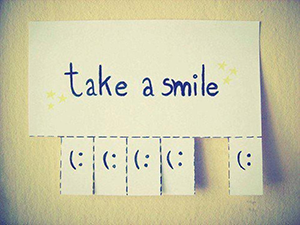 “If you think you can do a thing or think you can’t do a thing, you’re right.”-Henry Ford
“If you think you can do a thing or think you can’t do a thing, you’re right.”-Henry Ford
Have you ever wondered how two people in the same situation can have such different outlooks? One person focuses on the positive aspects, while the other person immediately focuses on the negative. If you find that you’re in the second group more often than you’d like, you are not alone. Scientists explain this as “negativity bias”: our brains are wired to hold on to negative experiences because that’s how we evolved to avoid danger and survive. Negativity bias shows up in several ways. Studies have found that:
- It typically takes five good interactions to make up for a single bad one.
- People will work much harder to avoid losing money than they will work to gain the same amount of money.
- Painful experiences are much more memorable than more pleasant ones.
Psychologist and author of “Hardwiring Happiness”, Dr. Rick Hanson, explains that our bodies generally react more intensely to negative stimuli than to equally strong positive ones because of the way our brains are wired. Negative stimuli produce more neural activity, the process our brain uses to send messages to and from other parts of our bodies, than do equally intense positive ones, and it happens faster and more easily. In effect, the brain is like Velcro for negative experiences, but Teflon for positive ones. Our thoughts guide our behaviors, and we can become stuck, feeling driven to repeat the mistakes from our past in hopes that this time the situation will work out differently, but it rarely does. Our behavior patterns become a part of our identity, so changing them can feel like a personal betrayal.
Here’s the good news: we can retrain our brains to absorb the good because “neurons that fire together, wire together”. The brain is constantly changing based on our experiences, growing new connections between neurons and strengthening existing ones. The more you get your neurons firing about positive facts, the more they’ll be wiring up positive neural structures, increasing our abilities to take notice of the many positive things that are happening to and around us every day.
Dr. Hanson suggests we try three simple steps to take in the good:
- Look for good facts and turn them into good experiences. When you notice something good, let yourself feel good about it as often as possible. Spend 30 seconds or so in private reflecting on it.
- Really enjoy the experience. Even if the experience is mild, stay with it for 20 or 30 seconds in a row. By filling yourself up with the positive experiences, you will increasingly feel less fragile inside, and become less dependent on external supplies as your source of happiness.
- Intend and sense that the good experience is sinking into you. People do this in different ways. Some visualize it in their body like the warmth of a cup of hot cocoa on a wintry day. Others may realize that focusing on the good experience helps neurons gradually wire together for more positive growth.
The reality is you’ll still face challenges in your life, but you’ll be more equipped to put them in perspective, lift your spirits, identify useful resources, and fill up your own cup so you have more to offer to others. Change takes time and courage, so be patient with yourself and others with this process.
Methodist Healthcare EAP offers free and confidential counseling to you and members of your household. Please call us today at (901) 683-5658 or toll free 1-800-880-5658 to schedule an appointment if you would like to address issues in your personal or professional life.
 Karole Shorter is a Licensed Clinical Social Worker and Certified Employee Assistance Professional with over 15 years of counseling experience. She received her Masters in Social Work from Florida State University in 1998. She has been a counselor at Methodist Healthcare EAP since 2006.
Karole Shorter is a Licensed Clinical Social Worker and Certified Employee Assistance Professional with over 15 years of counseling experience. She received her Masters in Social Work from Florida State University in 1998. She has been a counselor at Methodist Healthcare EAP since 2006.
